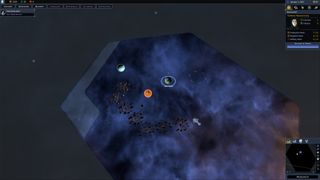Galactic Civilizations III for PC 'Crusade' expansion puts citizens at the forefront
The latest expansion for Galactic Civilizations II, called Crusade, is now available at select retailers.


This second expansion release for this popular 4X strategy PC title adds a number of new features, including an espionage system, new races and civilizations, invasions, a civilization creator, new user interface, and a citizens mechanic.
The first expansion pack, called Mercenaries, included the galactic bazaar, new ships and parts, two new factions called the Torians and Arceans, and a new campaign. It was a believed to be a fairly strong release for the series, packing in even more content inside one of the best 4X games available today. But unfortunately, it was hit by mixed reviews. The issue with the expansion was that it was rather light on features and content for its $20 price.
Is Crusade any better? I say yes. It seems as though the developer, Stardock, paid attention to criticism and feedback it received on the last expansion and has worked in new mechanics and features for the game. This is great news for consumers and fans of the company, the latter of whom felt bitterly disappointed by Mercenaries. It's difficult for a developer to bring new DLC to the table when solid mods are available, but Crusade is worth checking out.
Here's a look at what's new.
Halt citizen!

Prior to installing Crusade, the game's empire management feels a little too mechanical. By that, I mean you never really had the opportunity to interact with the population. This has been tackled by allowing players to select from a collection of unique roles, including admiral, celebrity, pioneer, and engineer, to help the empire flourish on the galactic stage.
It's possible to have citizens remain located on a core world, or you can take the risk and have them transported to newly acquired worlds. This plays into the new espionage system, which enables citizens to be trained in the dark arts to steal technology from other civilizations, create civil unrest on enemy worlds, and even assassinate other citizens. I really like the new citizen mechanic and view it as a solid replacement to sliders to further develop and buff your empire.
Get the Windows Central Newsletter
All the latest news, reviews, and guides for Windows and Xbox diehards.

Another new addition in Crusade is the invasion system. Citizens can be trained as soldiers for invading worlds, requiring strategy when selecting tiles to attack. Of course, invading enemy worlds isn't for everyone and should be planned out beforehand. If nothing else, it's an interesting way to break up gameplay.
Shiny new stuff

Joining the Terran Resistance are the Onyx Hive and the cybernetic space amoebas, the Slyne. The new civilizations are interesting for a playthrough, but to get the most out of the game you'll want to make your way to the faction creator. It's a solid tool that allows you to create a custom civilization with a custom leader, ideology, and abilities. A nice touch is the ability to share created civilizations with others through Steam Workshop.
The custom starbases are a great new feature for more defensive players who enjoy buckling down, creating more enemies than one can handle, and defending against attacks. The tech tree has been revamped to make it more accessible to modders, and Stardock has worked to improve the UI, though I came across one or two issues. Finally, more events have been added to the galaxy and United Planets organization.
Overall, there's quite the catalog of improvements in Crusade. It's definitely worth a look, especially if you have not yet played the game as a whole.
Pros:
- New UI.
- Solid new features.
- Custom factions!
Cons:
- Glitches with the new UI.
This review was conducted on a Windows 10 PC with an Intel Core i5 6600K processor overclocked to 4.8GHz and 16GB DDR4 RAM with an Zotac GTX 1070 AMP, and an Extreme graphics card with 6GB VRAM. The game copy was supplied by the developer.

Rich Edmonds was formerly a Senior Editor of PC hardware at Windows Central, covering everything related to PC components and NAS. He's been involved in technology for more than a decade and knows a thing or two about the magic inside a PC chassis. You can follow him on Twitter at @RichEdmonds.
